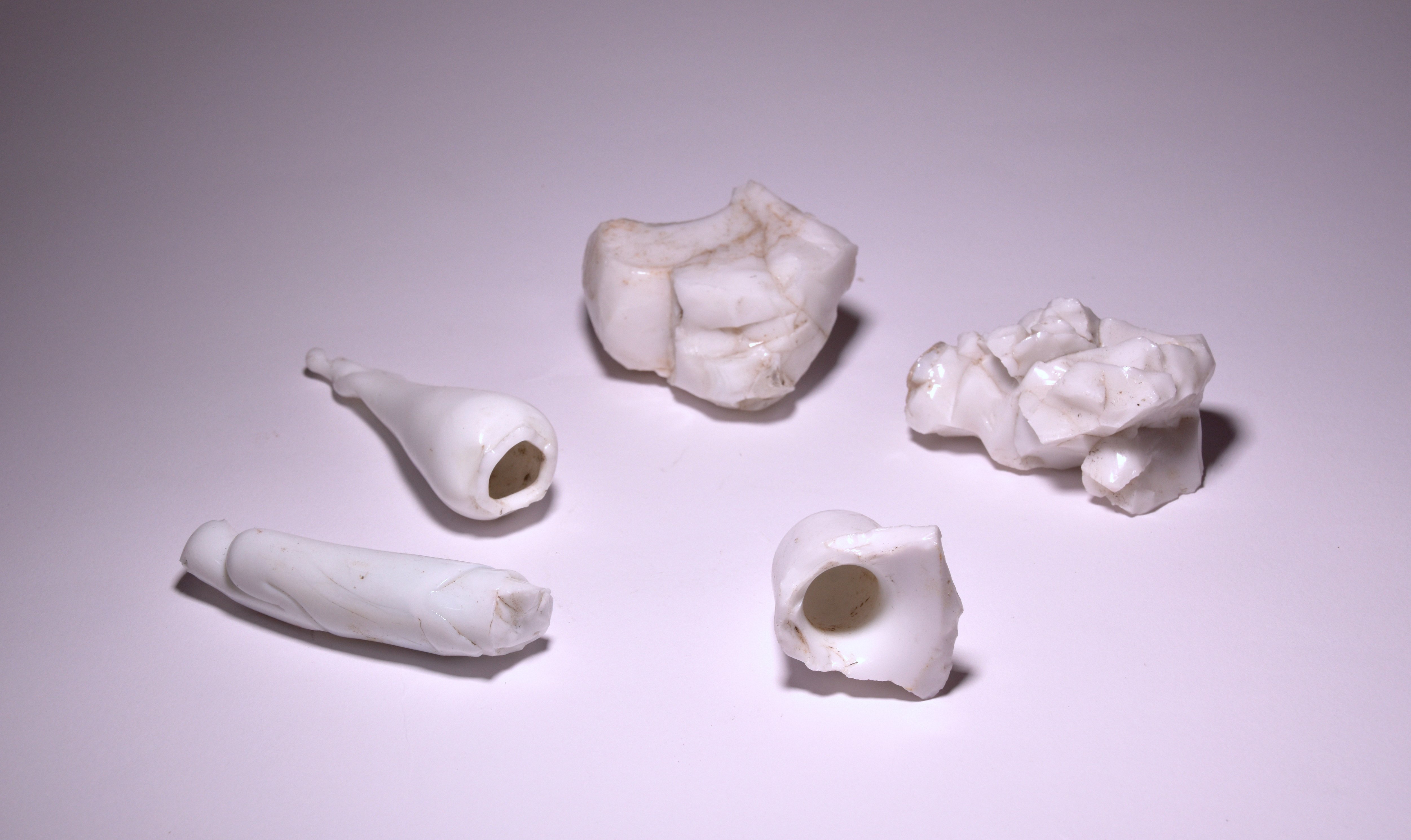Zwei Brocken und drei Produktionsbruchstücke aus opakweißem Glas, verschmutzt und korrodiert.
Diese Bodenfunde stammen aus einem Konvolut von 168 "gemischten Glasbruchabfällen", die im Museum aufbewahrt werden und deren Herkunft nicht dokumentiert ist. Robert Schmidt stellte vor über einhundert Jahren zu Neuglobsow fest, dass damals "große Mengen Scherben von [...] beinweißem Glas" den Platz der alten Glashüttengebäude umgaben (Schmidt, Brandenburgische Gläser, 1914, S. 119). Vielleicht handelt es sich demnach um Fundstücke aus dem Ort.
Anders als die ebenfalls zu dem Konvolut gehörenden Milchglasfragmente mit grünlichem Farbstich (Inv.-Nr. GM/AS/59/07 a), sind diese fünf Funde rein weiß. Im 18. und 19. Jahrhundert färbte man Glas durch den Zusatz von Hirschhorn oder von Knochenasche weiß, in der Regel mit derjenigen von Schafen. Als Porzellanersatz fand Milchglas vielfältig Einsatz. [Verena Wasmuth]
en

